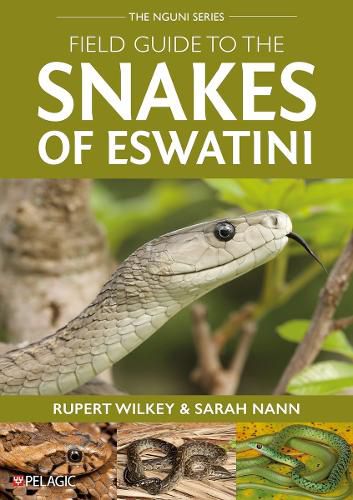Readings Newsletter
Become a Readings Member to make your shopping experience even easier.
Sign in or sign up for free!
You’re not far away from qualifying for FREE standard shipping within Australia
You’ve qualified for FREE standard shipping within Australia
The cart is loading…






Field Guide to the Snakes of Eswatini offers a complete account of all 63 snake species recorded in the Kingdom of Eswatini (formerly known as Swaziland). Each species is illustrated with stunning photographs, over 300 images in all. The species are described in detail, including size, colouration, habits and diet. Species are presented in colour-coded groups based on the severity of their bite and venom: highly venomous, venomous, venomous but not dangerous, and non-venomous. This system enables the reader to quickly assess the treatment required following a bite and to seek appropriate first aid.
Each species is contained in a double-page spread, making it easy for the reader to see all information on that particular snake, and also facilitating easy comparison by flicking between species. Dedicated sections also consider similar-looking species side by side, while there is also a wide-ranging discussion of snake behaviour, Eswatini's habitats and a host of other fascinating and useful information.
The authors each bring nearly 50 years of fieldwork and research experience together in this groundbreaking guide. It will appeal to the experienced herpetologist as well as amateur naturalists, hikers and tourists.
$9.00 standard shipping within Australia
FREE standard shipping within Australia for orders over $100.00
Express & International shipping calculated at checkout
Field Guide to the Snakes of Eswatini offers a complete account of all 63 snake species recorded in the Kingdom of Eswatini (formerly known as Swaziland). Each species is illustrated with stunning photographs, over 300 images in all. The species are described in detail, including size, colouration, habits and diet. Species are presented in colour-coded groups based on the severity of their bite and venom: highly venomous, venomous, venomous but not dangerous, and non-venomous. This system enables the reader to quickly assess the treatment required following a bite and to seek appropriate first aid.
Each species is contained in a double-page spread, making it easy for the reader to see all information on that particular snake, and also facilitating easy comparison by flicking between species. Dedicated sections also consider similar-looking species side by side, while there is also a wide-ranging discussion of snake behaviour, Eswatini's habitats and a host of other fascinating and useful information.
The authors each bring nearly 50 years of fieldwork and research experience together in this groundbreaking guide. It will appeal to the experienced herpetologist as well as amateur naturalists, hikers and tourists.